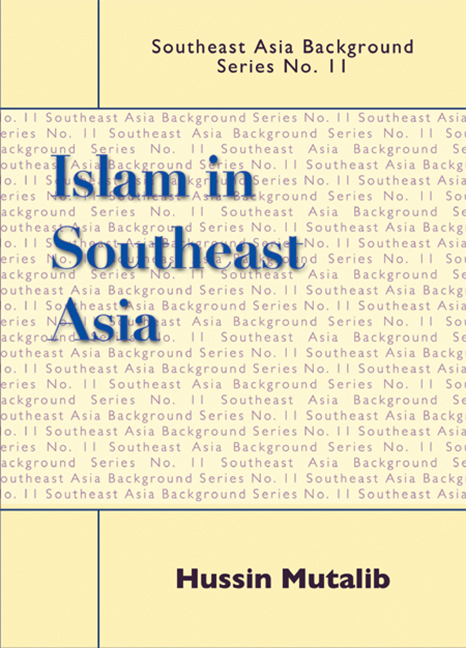Book contents
8 - Conclusion
Published online by Cambridge University Press: 21 October 2015
Summary
From the analyses and discussions in earlier chapters, a few main observations can now be made about Islam and the Muslims in Southeast Asia. These observations cover both the maritime and mainland regions and encompass countries where Muslims are the majority community and those where they are the minority.
In maritime Southeast Asia — comprising countries such as Indonesia, Malaysia, Brunei, Singapore, and the Philippines — Islam has had a dynamic, albeit uneven, impact upon the growth and development of the region as a whole. Reaching the shores of the archipelago from around the thirteenth century, the faith has evolved into a powerful influence in the ordinary lives of Muslims, particularly in countries with large Muslim populations, notably Indonesia, Malaysia and Brunei. It was in these three countries that Islamic scholarship, trade and political power took shape in the early centuries. The result: the faith spread to other areas throughout this part of the world, including in places where Hindu, Buddhist and other “popular religions” had long been established as the majority religions and cultures. From this region — the heartland of Islam in Southeast Asia — emerged other dispersed Malay (Muslim) diasporas, which are now to be found in faraway places across the globe, practicing their own versions of Islamicity.
The spread of Islam, however was not without its challenges. The arrival of colonalism in this part of the world, resulted in the imposition of Western worldviews, the bureaucratization of the faith, and the subjugation of things “Islamic”, although for the perspective, British rule of Muslim Southeast Asia was not as harsh as that of the Portuguese, Dutch, and the Spanish. Beyond this colonial factor, Muslims in different regions of maritime (or island) Southeast Asia had to grapple with other problems and challenges.
To begin with, although mostly Sunnis, Muslims here practice different variants of Islam, manifest, among others, in the traditionalist and modernist strands and the “moderate” and “fundamentalist” orientations.
- Type
- Chapter
- Information
- Islam in Southeast Asia , pp. 87 - 92Publisher: ISEAS–Yusof Ishak InstitutePrint publication year: 2008



